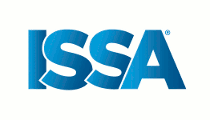Originally published in the April 2016 issue of ISSA
With its mission to promote The Value of Clean®, ISSA has helped the cleaning industry take a monumental leap forward with tools and information that help position cleaning as a truly valuable service (visit www.issa.com/value). But there’s another component to the value equation that isn’t based on facts and figures, but instead on emotion and perception.
We all know that trying to understand human psychology can be a frustrating exercise—just ask any husband and wife! But understanding that mental programming also can be extremely valuable when it comes to business. In so many cases, it’s these psychological traits that dictate our purchase decisions. But more importantly, most of this programming revolves around perception rather than reality. In simplest terms, customers often decide where to eat, what to buy, and how to rate a company’s product or service based on perceptions of visible cues rather than hard data and logic.
If a Tree Falls in the Forest…If you clean for wellness and no one sees it…? Bet you never thought you’d see that question in an ISSA publication, and for good reason. ISSA has been right to associate real business value with cleaning for wellness rather than appearance. We may initially judge a book by it’s cover, but if it’s really going to sell, it still needs to be a good book. In much the same way, we can make clean visible in order to create positive perceptions, but we still need to actually clean. The reason we use cleaners, sanitizers, disinfectants, self-cleaning surfaces, and robots is to kill pathogens and reduce the chance of cross contamination. This creates real business value by reducing absenteeism and increasing overall productivity. We would probably all agree that the true value of clean is in protecting human health and the environment, which translates into an improved bottom line. But if we understand human psychology and make clean visible, we unlock that final value nugget by shining a light on this valuable service. |
Judging a Book by Its Cover
A great example of this visible-cue decision-making process was shown in a study of consumer buying habits for produce. Research showed that the first “taste” of a food is actually done with the eyes; the appearance of the food is one of the first purchase considerations. These visible attributes enable the consumer to make judgments about the perceived flavor of the produce. Think about the impact this knowledge creates on the food industry. While the most important attribute of food when we eat it is taste, we aren’t even using that sense when deciding what to buy. And that perception continues after the purchase. Foods that looked better were perceived to taste better.
According to Emma Snider in her article “How to use Psychological Biases to Sell Better and Faster,” we’re all taught to not judge a book by its cover, but our brains are hardwired to do just that. Whether good or bad, the first piece of information we receive about a person or situation becomes an “anchor detail” that will color our overall perception.
And this little piece of human nature doesn’t simply affect our purchase habits. The process of formulating perceptions based on visible clues has an even stronger effect, changing how we feel: In another study, respondents who felt their city was “clean,” were more likely to report being happy. So if clean cities can make residents happier, then isn’t it reasonable to assume the same response would be created by a clean facility? If the result of having a visibly cleaner facility is happier tenants, students, patients, customers, and workers, imagine the amount of business value that could generate?
From Understanding to Innovation
In an article for Fast Company, Seth Kahan talks about how generating value is one of the most misunderstood tools of innovation, but also one of the most important. Value isn’t fixed or tangible; it rests in perceived benefit. In other words, value is in the mind of the beholder. (In fact, this process is the true driver of ISSA’s whole Value of Clean message—getting management and the public overall to perceive the true value of clean!) This means innovators need to work hard to understand exactly what value means to their customers so they can generate and provide it.
In fact, what if the real challenges in the cleaning industry aren’t price pressure, competition, and processes? Maybe the biggest business challenges revolve around recognition and perceived value.
So let’s talk about how some of the challenges in the cleaning and facility management industry could become opportunities when we embrace the lessons learned from human psychology.
Did you know that one-third of any purchase decision is based on perception of packaging? (For example, why are so many less-healthy foods packaged in blue? Because studies cite that upwards of 80 percent of men favor blue and that men are more likely to be attracted to and purchase these not-on-the-shopping-list items.) This makes sense when we accept that most of our perception is based on visible cues.
With this in mind, industry, cleanliness should be considered a major attribute in the visible “packaging” of a facility, affecting the perception of the facility and the business it houses.
The challenge is that typical visual cues related to cleaning tend to be negative. Most people only think about the issue of clean if they see trash or visible dirt. Most of us don’t typically have positive thoughts about clean because there isn’t anything to see. So does that mean that with our current system of cleaning, the only opportunity for a change in perception is negative. Cleaning companies and workers generally try very hard to do a thorough job, yet there is no recognition. The only time most people wonder who cleaned a facility is if it is dirty…then they start looking for someone to blame.
We have to start thinking of cleaning as not just a required chore, but a marketing initiative. We also have to acknowledge that the average person is going to assume many surfaces are dirty regardless of whether thorough cleaning has been done. The upside is that while traditional marketing has to be sensitive to cultural factors and perceptions, the desire for clean environments is almost universal, bridging most cultural differences.
Trust Me, It’s Clean!
Let’s call this a trust issue. Without visible clues, the assumption is that certain spaces are dirty. So much so that a 2015 U.S. School Restroom Study of university students conducted by Cascades Inc. found that 60 percent avoided their school restrooms altogether while 14 percent actually cleaned the facilities themselves. Another illustration of this can be seen with travelers. You can stay at a five-star hotel, and you still aren’t going to put your toothbrush directly on the bathroom vanity.
The same perception holds true for restrooms in any facility. The room can look spotless, but without other visible clues, people aren’t going to trust that the door handles are clean. Without visual clues that change our perception, we don’t trust the cleanliness of many public spaces, and we certainly don’t trust the hygiene of other people.
The funny thing is that sometimes visible or tangible things can create a positive perception even though nothing positive has actually taken place. We love to watch people come into our neighborhood grocery store and clean the shopping cart handle with the wipes provided by the store. If you read the label, you’ll find out that most of those wipes require a dwell time of 3-10 minutes. Yet consumers do a quick back-and forth-wipe, feeling completely confident that they’ve killed all the scary pathogens on the handle they are about to touch. This is a great example of doing something visible to positively affect perception of a facility or business, even if the implied benefit hasn’t been received.
And if there’s a lack of trust in the hygiene of our fellow man, it’s for good reason. Depending on which study you’re looking at, hand washing is not done at all by a sizable percentage of people. So even if I wash my hands, I still don’t trust most common touch points because they are touched by other people. This presents a great opportunity for automated technologies, which help to overcome that lack of basic hygiene.
There’s another component of psychology that can contribute to environments becoming even dirtier. Numerous studies show that when people perceive an environment to be, they start to behave appropriately. In a dirty environment, people litter more, and when the bathroom sink looks dirty, hand washing rates go down. This shows that by changing the perceived cleanliness in a visible way, people will be more likely to keep the environment cleaner and practice better hygiene.
We’ve seen this cycle first hand while researching the application of self-cleaning surfaces that visually communicate their function. Previously, entry doors at monitored locations had to be cleaned frequently because people would touch many different locations on the door. The logic was that they didn’t want to touch where everyone else was touching. When the visible self-cleaning surfaces were installed, people gravitated toward touching those locations, leading to a door that stayed visibly cleaner longer.
While we’ve focused on visible approaches to affect public perception, you could argue there’s an opportunity to use another of our senses to change perception…smell. This opportunity is just starting to be recognized by the cleaning industry, but progress needs to be made. Simply trying to mask the scent of strong cleaning chemicals with perfumes does not necessarily create a positive reaction, especially with those with fragrance sensitivities.
Visibility = Value
So we’re left with a big opportunity, which is to create environments that people perceive to be clean based on positive visible cues.
If we remember how first impressions can color our future experience, this makes sense. For example, patient-experience managers realize that patients who have a positive experience and a positive perception of the facility tend to have a positive perception of their care and health care provider.
“The self-cleaning surfaces we installed visually communicate to our patients that we are doing everything in our power to protect their well-being,” says Lauren Bennett, patient experience manager for MD Resources. “It’s a small gesture with huge impact.”
Meanwhile, the Hospital Consumer Assessment of Healthcare Providers and Systems survey results show how measuring patients’ perception of the cleanliness of a hospital, directly affects reimbursement rates.
It’s not just patients that notice these visible cues. Doctors are just as susceptible to perceptions. “I remember how impressed I was when I saw self-cleaning surfaces at the Virginia Tech Carilion School of Medicine,” says Dr. Tom Eppes, past President of the Medical Society of Virginia. “I wanted our patients to be just as impressed with our practices. We want to deliver the cleanest, healthiest patient experience possible.”
So how can the cleaning industry adapt to take advantage of these opportunities? As experts contend, you have to identify the real problem before you can design a solution. The cleaning industry has been commoditized, with most of the competition revolving around price. What’s worse, cleaning is an invisible service. Most people don’t know who cleaned a facility, when it was cleaned, or even if it was cleaned. So if much of our perception of value is based on visible cues, how can we shine a spotlight on cleaning, the resulting cleanliness, and the companies which provide this valuable service?
First, clean has to be a priority, not just in critical areas like restrooms, but from the very first point that a customer enters a facility. And first impressions matter. A detailed analysis conducted by a leading car rental company showed how one area can affect perceptions of other areas of a facility. The workers made it a priority to keep the rental cars spotless, so they were puzzled by the unexplained discrepancy between the excellent condition of the cars and the less-than-excellent perception that surveyed customers had. The analysis revealed that by improving the cleanliness of the check-in counters…the customer’s first impression…the perception of the car’s cleanliness went up dramatically. This led to a positive shift in loyalty and repeat business. Imagine if you took that a step further and provided something visibly clean prior to the check-in counter, at the front door.
So the lesson is that cleaning should be used as a way to positively affect a person’s first impression—as well as subsequent ones. While effectively removing pathogens from surfaces is a necessary part of cleaning, it is invisible and therefore does not create a perceived value. However, utilizing products throughout the facility that visually communicate a commitment, such as wipes, hand sanitizer, self-cleaning surfaces, posted cleaning schedules, cleaning robots, etc. can create this perceived value, letting people know there’s more going on than a simple spray and wipe. Some of these newer technologies can also be a tremendous differentiator since so few businesses are using them. And finally…communication and visibility. Don’t try to hide the cleaning process, make clean—and cleaners—visible. Seeing professional cleaning personnel working and visually communicating the steps you are taking will go a long way toward tapping into human psychology and adding to the true value of clean.






